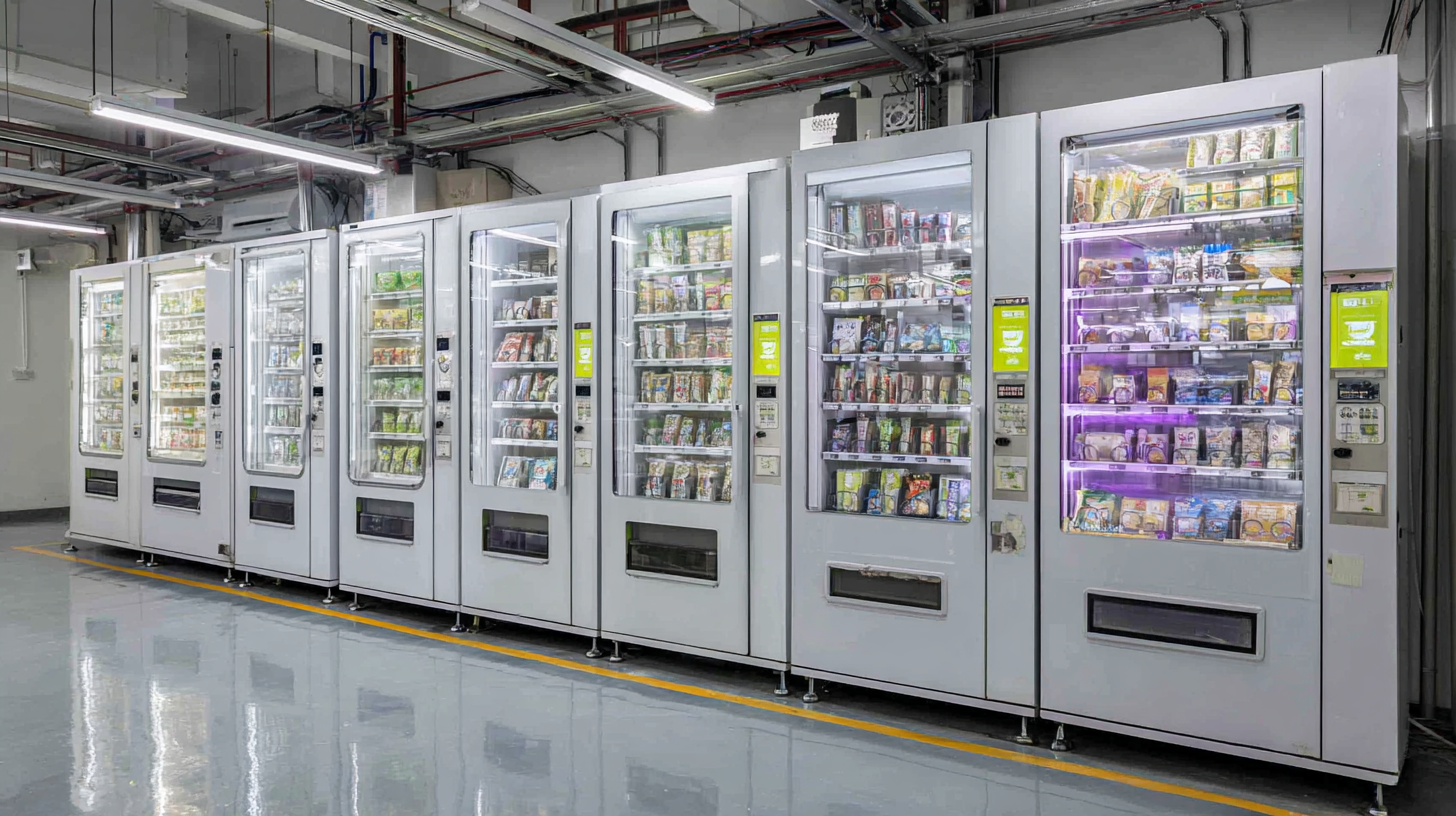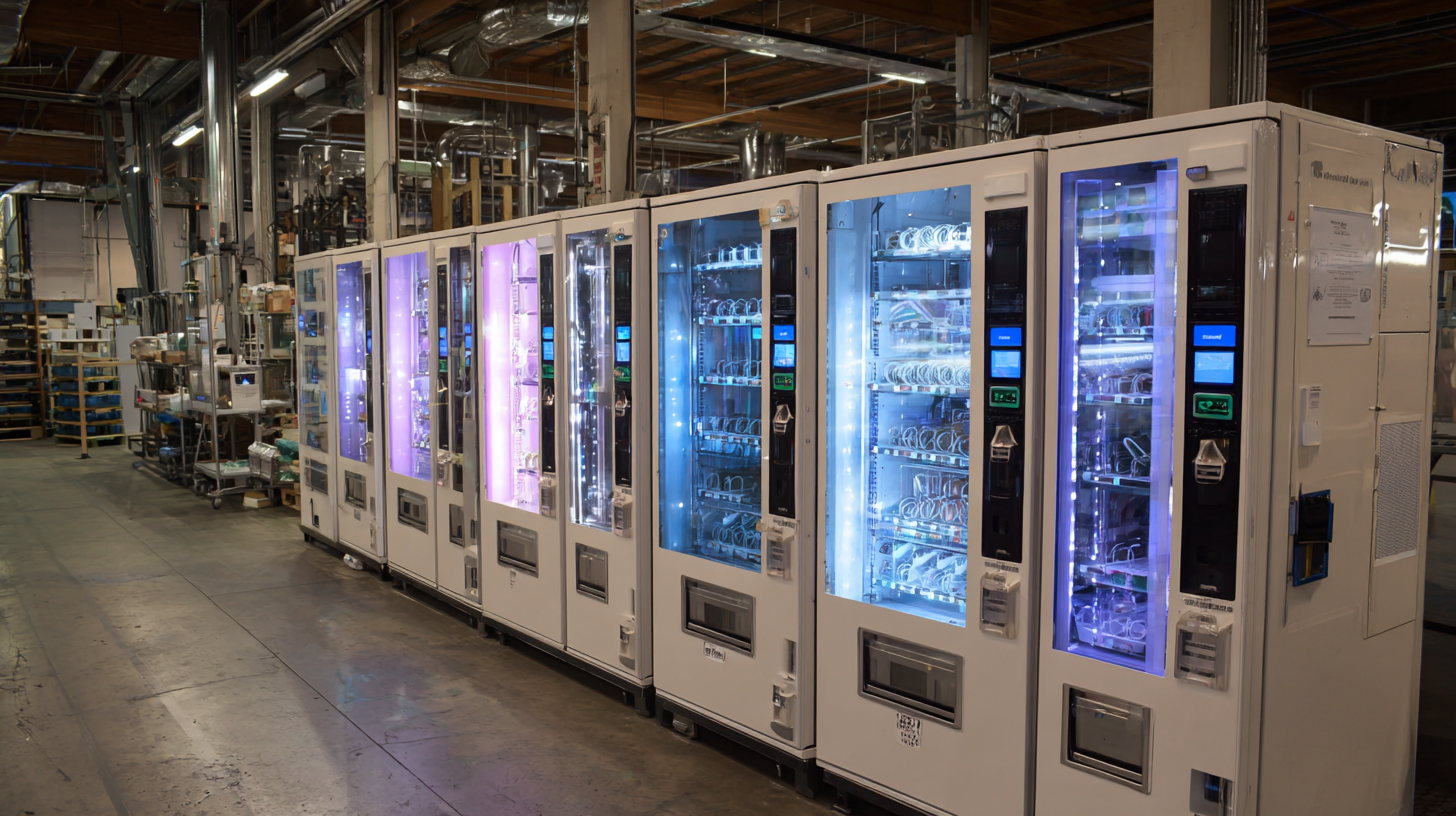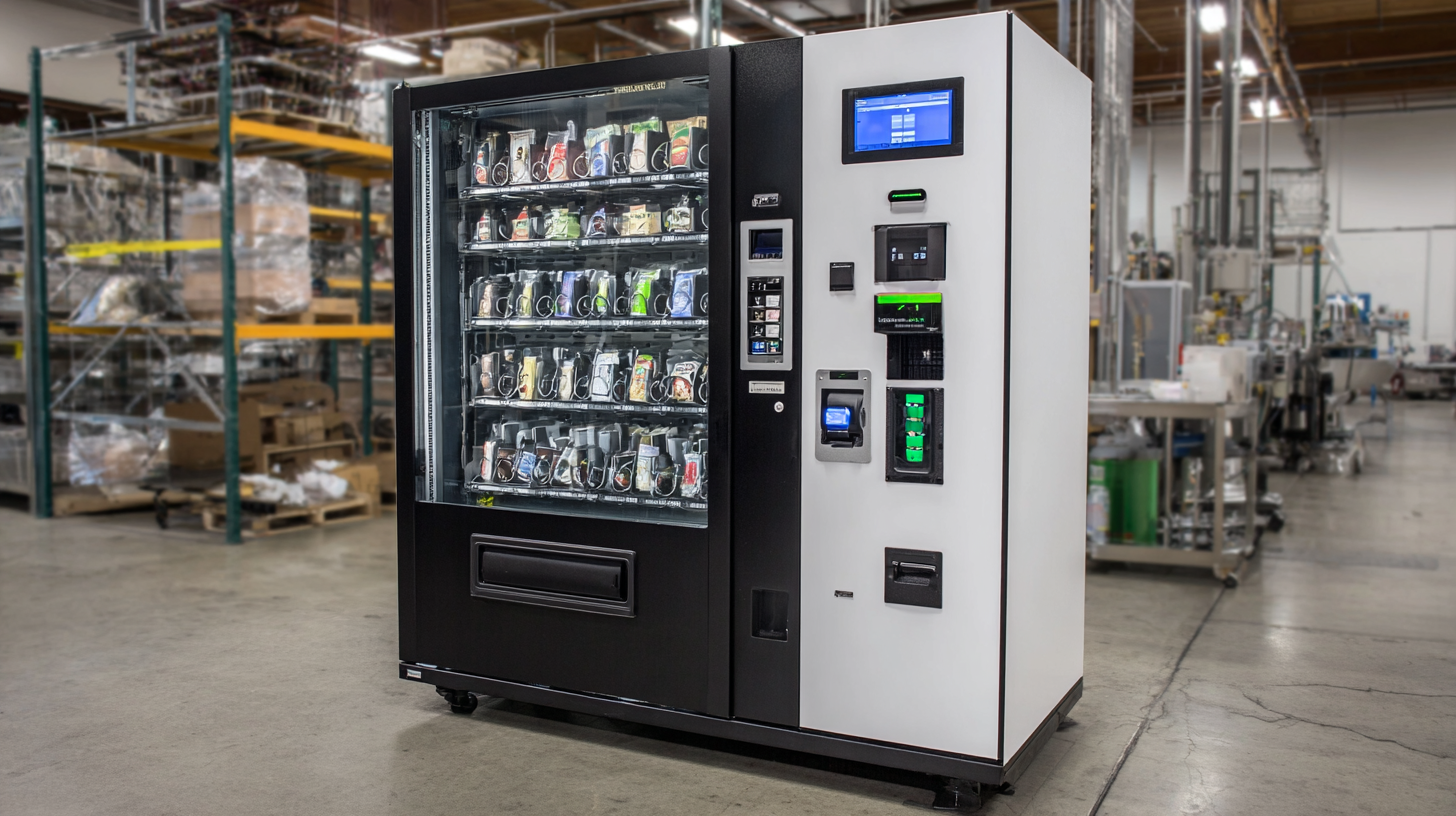Understanding Industry Standards for the Best Meal Vending Machine and Their Key Benefits
In today's fast-paced world, convenience is paramount, especially when it comes to food options. The meal vending machine industry has seen significant growth, with the global market projected to reach $2.63 billion by 2026, driven by an increasing demand for quick and nutritious meal solutions. Innovative technologies and changing consumer preferences are shaping the future of meal vending machines, making them more efficient and user-friendly.

For instance, a report by the International Vending Alliance highlights that 75% of consumers consider the availability of healthy meal options in vending machines as essential. As these machines evolve, understanding the industry standards becomes critical for manufacturers and businesses aiming to provide the best meal vending solutions. This blog delves into these standards, exploring their key benefits and implications for both consumers and operators in the ever-competitive food service market.
Key Features to Look for in High-Quality Meal Vending Machines
When considering high-quality meal vending machines, it's essential to focus on several key features that ensure both functionality and customer satisfaction. According to a recent industry report by IBISWorld, the meal vending machine market is expected to grow by over 10% annually, driven by a rising demand for convenient and healthy food options. This trend underscores the importance of offering machines that can accommodate diverse dietary preferences, including vegan and gluten-free meals. Machines equipped with user-friendly interfaces and cashless payment options not only enhance the customer experience but are also becoming standard expectations among consumers.
Another critical aspect is the temperature control system. Research from the National Automatic Merchandising Association (NAMA) highlights that over 70% of consumers are concerned about food safety and quality. As such, high-quality meal vending machines should have advanced refrigeration technology to keep perishable items fresh and ensure compliance with health regulations. Additionally, features such as real-time inventory tracking and remote monitoring systems are increasingly valuable, as they enable operators to manage stock efficiently and respond to consumer trends swiftly. Employing these key features can help operators maximize profitability and meet the evolving demands of today's health-conscious consumers.
Understanding Industry Standards for the Best Meal Vending Machine and Their Key Benefits - Key Features to Look for in High-Quality Meal Vending Machines
| Feature | Importance | Industry Standard | Key Benefits |
|---|---|---|---|
| Nutritional Variety | Offers diverse meal options to cater to different dietary needs. | Variety of meals including vegetarian, vegan, and gluten-free. | Increases customer satisfaction and promotes healthier eating habits. |
| Hygiene Standards | Ensures food safety and quality. | Compliance with local health regulations. | Reduces risk of foodborne illnesses. |
| User-Friendly Interface | Enhances ease of use for consumers. | Intuitive touchscreen or button interface. | Increases sales by making the purchasing process smooth. |
| Payment Flexibility | Provides various payment options for convenience. | Support for cash, credit/debit cards, and digital wallets. | Attracts a wider customer base. |
| Temperature Control | Maintains food at safe consumption temperatures. | Refrigerated and heated compartments. | Ensures meal freshness and quality. |
| Remote Monitoring | Allows operators to track inventory and machine performance. | Integration with cloud-based analytics. | Optimizes restocking and reduces machine downtime. |
Understanding Health and Safety Regulations for Meal Vending Machines
As the health landscape evolves, understanding health and safety regulations for meal vending machines becomes increasingly crucial. Recent legislative shifts, such as California's prohibition on synthetic food dyes in school meals by the end of 2027, underscore the growing emphasis on nutrient-rich food options. This legislation aligns with broader trends to improve nutritional standards in schools and workplaces, reinforcing the need for meal vending machines to comply with stringent health protocols. According to the Food Service Guidelines for Federal Facilities, implementing best practices can significantly boost the availability of healthy meal choices, which is vital as the demand for healthier food options grows.
Moreover, the push towards fresh-food vending machines has also gained momentum, with cities like New York requiring health permits and inspections for machines that dispense fresh meals. This mirrors similar regulatory trends seen across various states, such as Arizona’s Healthy Schools Act banning ultra-processed foods by the 2026–2027 school year. Such regulations not only aim to tackle the prevalence of unhealthy eating habits but also pave the way for innovative solutions in vending technology, promoting a culture of health and safety that benefits consumers and fosters better dining choices in schools and workplaces.

The Role of Technology in Enhancing Meal Vending Experiences
The integration of technology in meal vending machines is transforming the way consumers access and enjoy meals on the go. Advanced touchscreen interfaces enable users to browse extensive menus, customize their orders, and receive real-time information regarding nutritional content and allergens. This level of interactivity not only enhances user experience but also encourages healthier eating habits by allowing customers to make informed choices.
Moreover, innovations such as mobile payment systems and loyalty programs are becoming increasingly common in meal vending. This convenience eliminates the need for cash transactions and rewards customers for their purchases. Additionally, telemetry technology allows operators to monitor inventory levels, ensuring that popular items are always in stock and minimizing food wastage. With these technological advancements, meal vending machines are no longer just a convenient option; they have become a smart solution that caters to the evolving needs of consumers while maintaining high industry standards.

Benefits of Offering Varied Meal Options in Vending Machines
When it comes to meal vending machines, offering a diverse array of meal options can significantly enhance user satisfaction and engagement. Consumers today are increasingly health-conscious and have varied dietary preferences. By providing a range of choices—such as vegetarian, gluten-free, and low-calorie options—you cater to a broader audience, ensuring that everyone can find something that suits their needs. This diversity not only attracts more customers but also encourages repeat usage of the vending machine.
Tip: Regularly update your menu to include seasonal items or trending diets. This keeps your offerings fresh and appealing to repeat customers.
Additionally, varied meal options can promote healthier eating habits. When individuals have access to nutritious meals at their convenience, they are more likely to make better food choices rather than resorting to unhealthy snacks. This can lead to increased overall well-being and productivity, particularly in workplaces or educational institutions where these machines are commonly found.
Tip: Collaborate with local health food suppliers to provide fresh, local ingredients. This not only boosts your meal quality but also promotes community support and sustainability.
Understanding Industry Standards for Meal Vending Machines
Tips for Choosing the Right Location for Meal Vending Machines
When considering the placement of meal vending machines, location is paramount. Research shows that nearly 70% of successful vending operations thrive in high-traffic areas. For instance, placing machines near universities or hospitals can greatly increase usage, given that these locations often cater to busy individuals looking for quick meal options. According to a recent industry report by IBISWorld, vending sales in the food and beverage sector are projected to grow by 4.5% annually, highlighting the importance of strategic placement to tap into this expanding market.
In addition to foot traffic, it’s crucial to consider the demographics of the surrounding area. Data from the National Automatic Merchandising Association indicates that locations with a youthful demographic—particularly those under 35—tend to prefer healthier, ready-to-eat options. Hence, selecting locations such as gyms, office complexes, and college campuses can significantly enhance the appeal and profitability of meal vending machines. Furthermore, ensuring accessibility and visibility will not only draw customers but also encourage repeated patronage, ultimately leading to higher sales and brand loyalty.
